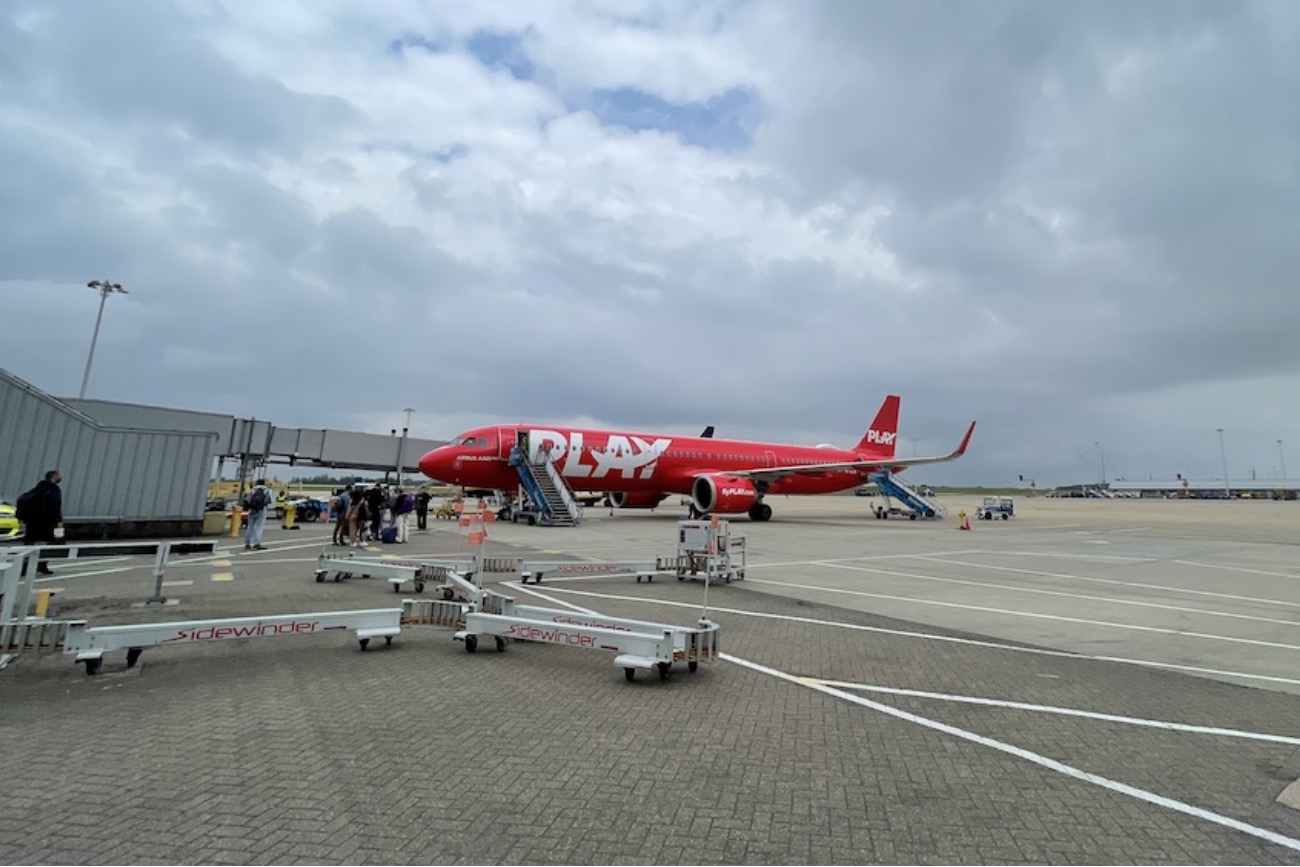
Iceland – Don’t Be Scared Flying During a Pandemic Is Easy
Flying During The Pandemic
Flying overseas from the UK during the COVID-19 Pandemic can be concerning. I’ve just flown to Iceland (a UK Green country) and home again and wanted to share my experience. Perhaps I can put your minds at rest so you can look forward to enjoying your holiday. It really wasn’t much different from flying in more “normal” times, despite the need for tests and extra documentation.
I travelled to Keflavik airport in Iceland from London Stansted using the new, but very excellent Fly Airlines. At the time of travel Iceland was in the UK’s Green List of countries and I had been double vaccinated.
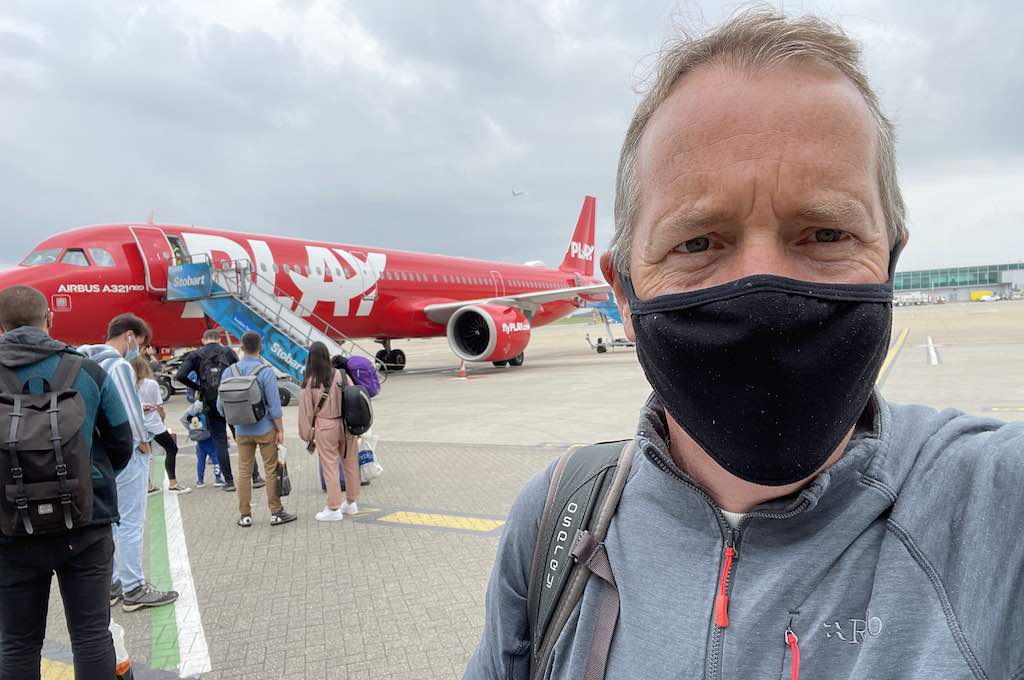
Before You Fly
This is just my experience on one flight to a particular destination on a single airline. Please ensure you do your research before you book and fly. For UK citizens, the UK.GOV website is your go-to source of information. For Iceland go to their dedicated COVID website. I also found the Iceland Airlines site a great source of information including a useful step-by-step checklist.
Before 27th July, travellers who were either “fully” vaccinated or those with a certificated previous Covid-19 infection, did not have to have a test on arrival at Keflavik airport in Iceland.
Fully vaccinated means two doses of an approved vaccine (or 1 shot of the Johnson and Johnson) with the 2nd shot having been administered at least 14 days before you travel. See the Icelandic Covid 19 site for details of approved vaccines (at the time of writing this included all vaccines used in the UK).
However, since the 27th of July, due to a small but significant spike in cases on the island, proof of a negative PCR test is now required to enter Iceland.
You can get a test at Keflavik airport when you arrive, but this will mean delays when you land, and also you will then have to quarantine in a suitable hotel until your test result comes through negative. This can take anything from 4-12 hours or even up to 24 hours, so it’s not the most convenient option. If you’re test then proves positive, you will have to quarantine for 10 days.
Another option is to take a PCR test before you leave the UK (note that some airlines may insist on this, checking you’re PCR test status before allowing you to check-in or board). You cannot use the NHS for this test and if you do the airline is likely to reject this as proof of a negative PCR test. There is a list of approved private test companies on the GOV.UK website, but note that the prices quoted here aren’t always a true reflection of the price you’ll end up paying, so check a few options before deciding on a provider.
Order your test as soon as possible. I ordered a test from Randox 5 days before I was due to fly, and it took over 7 to arrive. Luckily as I was flying before the 27th of July, this was a fallback in case Iceland changed its rules at the last minute so it wasn’t the disaster it could have been.
Some companies, like C19Testing offer packages for Green and Amber countries and at the time of writing, have a special offer running. If you order a Day 2 test, you get a free “fit-to-fly” test included. I used C19Testing for my return to the UK test (see below) and Expert Medicals for my Day 2 after return test. C19Testing gave me the best experience. I got little customer support from Randox so they get my big, red cross mark. Expert Medicals delivered the test quickly but took over 4 days to send me my negative test result (not a problem for a Day 2 test, but would have been frustrating if I was waiting for an early release from self-isolation with a Day 5 test). Expert Medicals also get a black mark for not responding to any of my emails and not having anyone manning their online “live” chat service.
Not more than 72 hours before you fly, you also need to pre-register your arrival in Iceland. To do this, simply complete an online Iceland Arrivals form for each passenger in your group, and obtain a barcode to prove you’ve completed this. The barcode will be checked in the UK and on arrival in Iceland.
Although it’s usually possible to rely on a mobile phone for boarding cards and other documents, it’s also advisable to print them if you can, just in case your battery dies, you can’t get a data connection, or your phone breaks or gets stolen.
Pre-Departure CheckList
- Order your pre-departure test (at least 2 weeks before departure)
- Take your pre-departure test no more than 72 hours before your outbound flight takes off, ensure you have a copy of your negative result certificate (NHS test results will not be accepted at the airport)
- Complete the Icelandic arrivals pre-registration form and store the barcode somewhere handy
- Ensure your destination accepts the NHS app as proof of vaccine. If so, install the app (note this is not the COVID19 Track and Trace App), set it up with your NHS number, and ensure your vaccine certificate is displayed correctly. Alternatively, go to the NHS website and order a Covid Pass Letter as proof of double vaccine, allowing about 5 days for delivery.
- Book your return to the UK test in Iceland, or order an Antigen test from C19Testing, or similar, to take with you.
- Pack your mask and spare and a small bottle of sanitiser.
At The UK Airport
As mentioned, I flew with Play Airlines from London Stansted airport, so your experience may differ slightly depending on the airport you depart from and which airline you fly with.
On arrival at Stansted, most people were wearing masks, but there was very little social distancing which, to be honest is impossible in the crowded departures hall at an airport. People were leaving more space between each other than would be usual in the queues for bag drop.
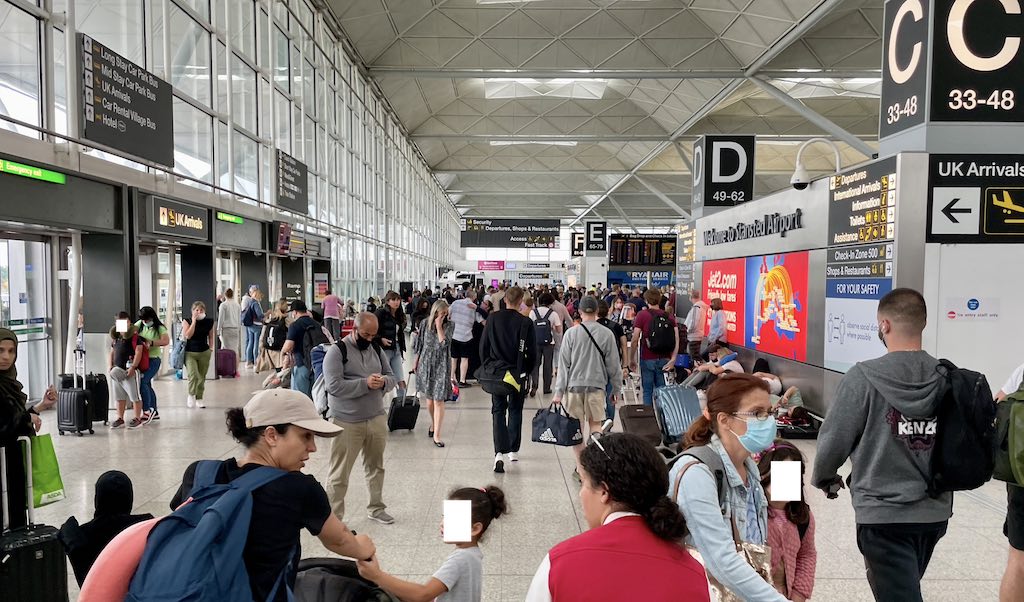
Having checked in online and only carrying a rucksack to take into the plane’s cabin, I was instructed to go to Play’s Helpdesk to have my Covid documents checked. As it turned out, the “Helpdesk” was one of the two bag drop desks, so I had to queue with the other passengers with hold luggage to have my documents checked. They want to see your passport, boarding card, Iceland arrivals form barcode, proof of vaccine/infection, and a negative PCR test certificate from an approved provider.
All being well, you then get a sticker on your passport to say your documents have been checked and can proceed through security.
It should be noted that the check-in desks and security at Stansted weren’t as busy as they would normally be during the school holidays. However, the check-in/bag drop queue was slower than usual due to the extra document checks needed, so allow plenty of time before your scheduled flight time.
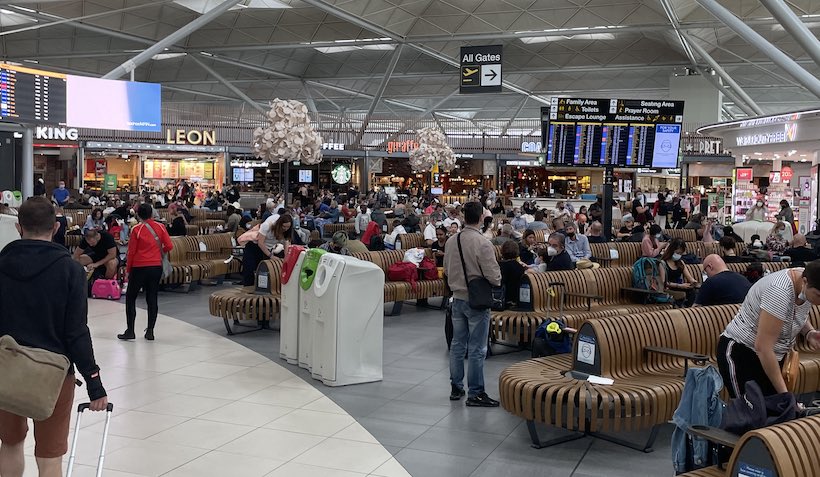
There were no more document checks until arrival in Iceland, although I did discover that passengers with just cabin luggage could have their documents checked at the boarding gate, which would have saved a great deal of time. This was also the same when leaving Iceland.
Throughout the airport, most people were wearing masks. I didn’t see any of the small numbers of adults that weren’t wearing masks be challenged by airport or airline staff.
It should be noted that not all the shops in the Duty Free mall were open, though most of the eating places were fully operational. It was also difficult to buy bottled water as stocks seemed to be very low in places like Boots and WH Smiths. None of the water fountains were working either.
During the Flight
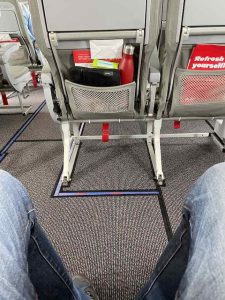 Again masks were mandatory on the flight and I didn’t see anyone (apart from small children) not wearing one. You can, of course, remove the mask to eat and drink when in your seat. The restrooms at the front of the plane were reserved for the flight attendants use, the ones at the rear for the passengers. They were cleaned or wiped down with sanitiser very regularly.
Again masks were mandatory on the flight and I didn’t see anyone (apart from small children) not wearing one. You can, of course, remove the mask to eat and drink when in your seat. The restrooms at the front of the plane were reserved for the flight attendants use, the ones at the rear for the passengers. They were cleaned or wiped down with sanitiser very regularly.
A full trolley service operated on my flight, but there was no Duty Free trolley service.
As an aside, I was very impressed by the new planes Play Airlines have kitted out. The front seats, up to the wings had plenty of legroom and the exit seats (which I usually choose) had enormous amounts of room. The front of the plane, both outgoing and the return, were almost empty, but the back of the plane was quite busy (probably due to the extra cost of choosing a seat towards the front).
On Arrival In Iceland
On arrival, the airport at Keflavik was almost deserted with a very reduced number of flights operating. At the passport control booths (UK passport holders now using the “other countries” channel rather than the EU channel) there were no queues so I was through within seconds, getting the stamp in my passport. You can then follow the signs for Baggage Reclaim and Exit. After collecting your bags, you’re in the Departures Hall, but there are more booths before you’re actually into Iceland. Here they check your Iceland Visitor barcode, PCR test result, and vaccine certificate or proof of a previous infection.
You can then leave the airport to catch your Flybus into Reykjavik (which takes about 45 minutes), grab a taxi or pick up your hire car. If you do have to quarantine for some reason (e.g. if you were getting a PCR test at Keflavik airport), then you must catch the Flybus to your quarantine approved hotel and stay there until a negative test result comes through. Most hotels a quarantine approved, but you should check with your chosen hotel before booking.
Pre-Return COVID-19 Testing
Even from Green countries, before you return to the UK you will need to have a negative COVID-19 test. This must be performed no more than 72 hours (i.e. 3 days) before the departure time of your flight back to the UK. Bearing in mind that tests can get delayed during processing, I set an alarm on my phone and took my test as soon as possible.
The UK accepts both PCR and Antigen (Rapid Flow) tests, the latter being cheaper and having a quicker turnaround for receiving your result. However, if using an Antigen test ensure it meets the accuracy standards set out by the government on the GOV.UK website.
You can order a test in Reykjavik from the Iceland health authorities, or from a company called Oryggi located near Keflavik airport. Whilst travelling through the City I drove past the Reykjavik test centre and the queues were extremely long, winding around the car park and around the block. An American traveller I met did say they were told to go straight to the front as they were only wanting an Antigen test and the queues were for the locals to receive PCR tests or vaccine shots. The in-country test works out at about £41 with the current exchange rate. Book your test here.
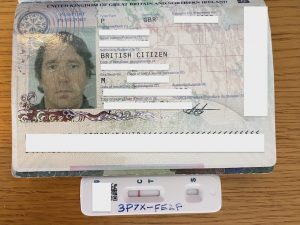 There is a much easier alternative, which should also work for other countries. I bought an antigen test from C19Testing before I left the UK and took it with me. C19Testing is a UK government-approved test provider. I administered my own test in my hotel room at the right time and took a photo of the negative result on the test strip together with the photo page of my passport. You then register your test on their website using the barcode provided and send them the photo of the test result and passport. Two hours later I received my certificate in PDF form sent to my email address on my phone. I then showed this at the airport as proof of a negative test. The cost was £29 per test (free if you buy the Day 2 test at the same time).
There is a much easier alternative, which should also work for other countries. I bought an antigen test from C19Testing before I left the UK and took it with me. C19Testing is a UK government-approved test provider. I administered my own test in my hotel room at the right time and took a photo of the negative result on the test strip together with the photo page of my passport. You then register your test on their website using the barcode provided and send them the photo of the test result and passport. Two hours later I received my certificate in PDF form sent to my email address on my phone. I then showed this at the airport as proof of a negative test. The cost was £29 per test (free if you buy the Day 2 test at the same time).
Returning Home From Iceland
 In the Departures Hall at Keflavik Airport, all passengers were being directed, as in Stansted, to the bag drop desks to have their Covid-19 documents checked. Again it is possible to skip this if you only have carry-on bags and have them checked at the boarding gate.
In the Departures Hall at Keflavik Airport, all passengers were being directed, as in Stansted, to the bag drop desks to have their Covid-19 documents checked. Again it is possible to skip this if you only have carry-on bags and have them checked at the boarding gate.
Note: The airline staff ask for proof of PCR test. The UK rules also allow an approved Antigen test, which is what I used. Don’t be alarmed by their use of the generic term PCR test.
The airline will check you’ve had a valid, negative pre-return COVID test and will want to see the confirmation of your completed UK Passenger Locator form (not the confirmation email but the actual completed form so ensure you either have an electronic copy or have internet access on your phone to access and display this at the time).
Again you get a little sticker on your passport that says you’ve had your documents checked. That was the last time I had to show any Covid-19 documents during my journey home. On arrival at Stansted I only had to show my passport and the queues for passport control took around 10 minutes. Strangely, in Stansted and despite Brexit, there still remains a single immigration channel, and hence queue, for UK and EU passports, one for Families and one for Other Passports.
In Summary - Travelling Is Easy
Iceland is a Green List Country, and it was very easy travelling there and back. The only real difference was the need to organise, and pay for, the various tests and the little extra waiting time to get the documents checked. However, as many people are choosing staycations, the airports aren’t as busy as they would be during the school holidays. This means the wait times aren’t as bad as they could be.
If you’re desperate for a holiday, go ahead and feel safe, I certainly did. I can also recommend Iceland. Please SUBSCRIBE to receive notifications as I write up my experiences.
Simon Eyre
After travelling internationally on business for multiple decades, I have decided to take early retirement. I am now fulfilling two dreams. To travel more slowly and to write my own thriller novels.
Comments:
Sorry, the comment form is closed at this time.


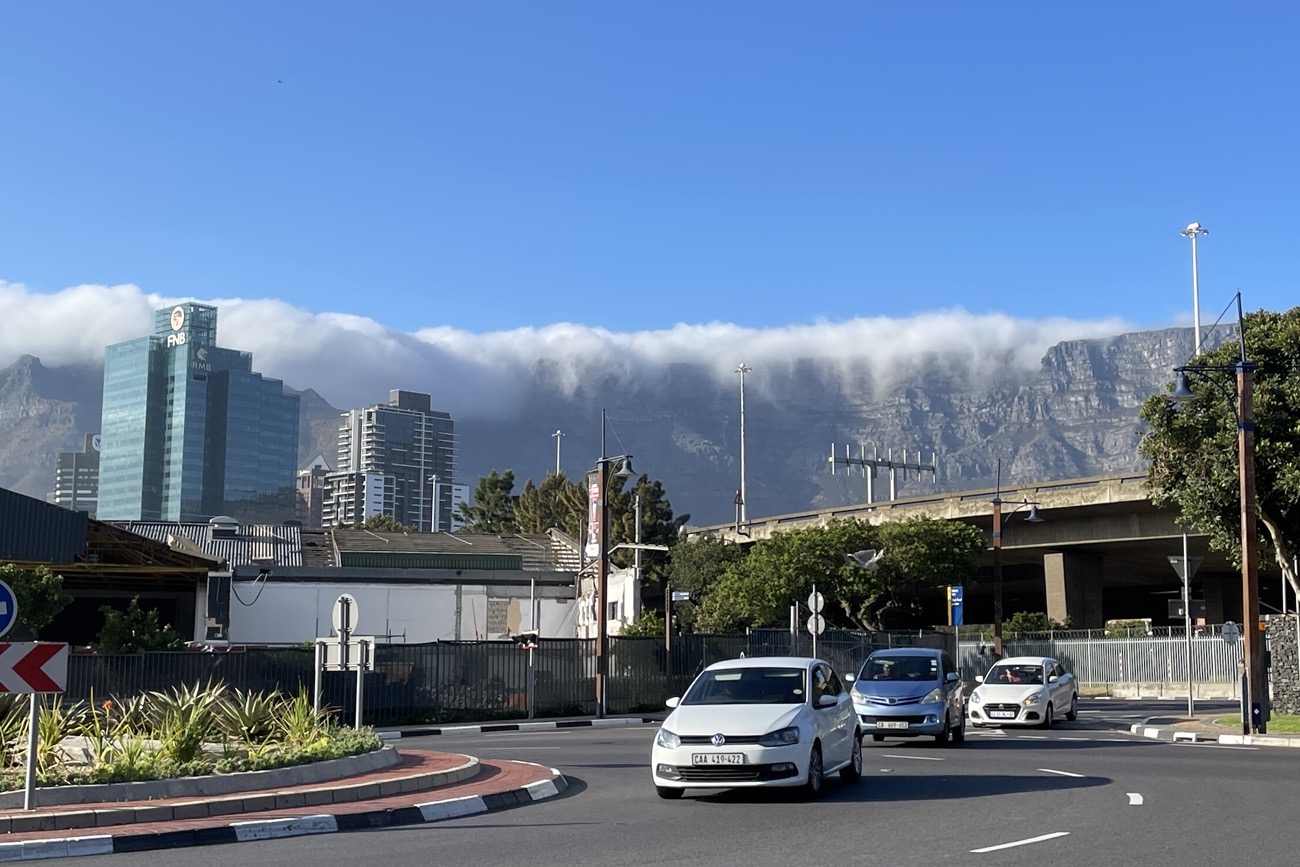



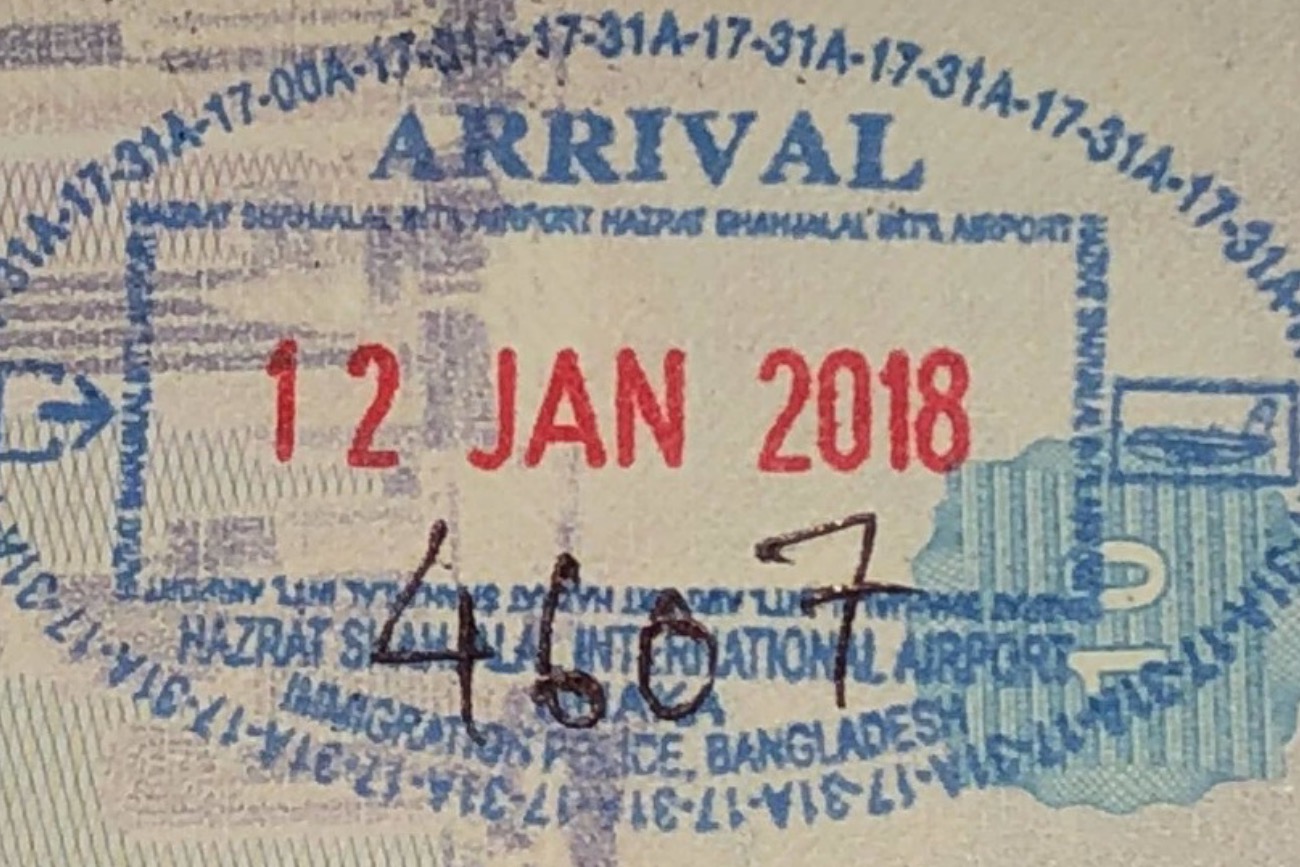








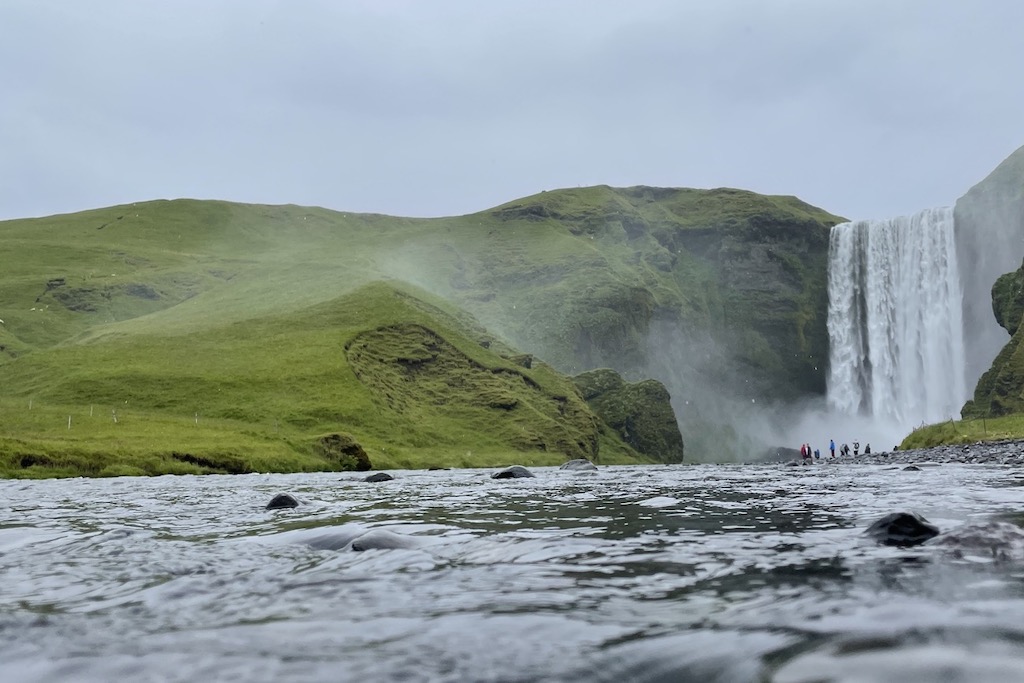


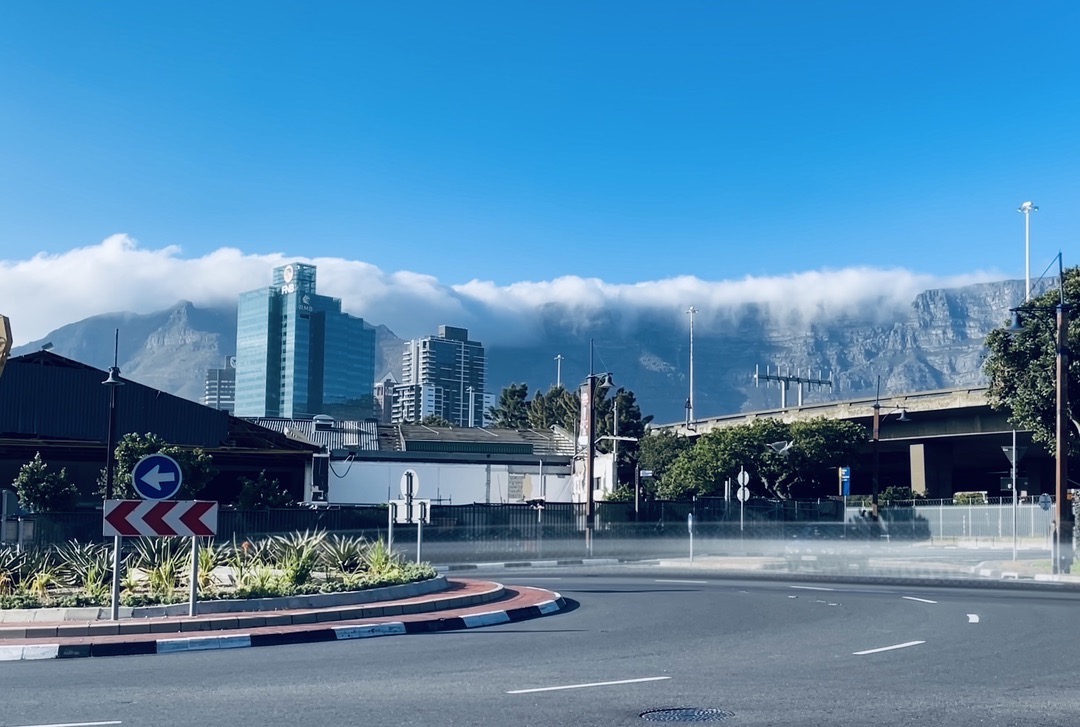






David Ecker
Thanks for you post. I have been working about getting a Covid test. Knowing how easy it is may change my mind. Great article
ReluctantBackpacker
Thanks for engaging David. Things are even easier now as you currently no longer need a pre-departure test before leaving Iceland to fly back to the UK.
David Ecker
Thank you for the post. I have been concerned about getting a Covid test before international travel. Knowing how easy this was I am thinking of heading out again.